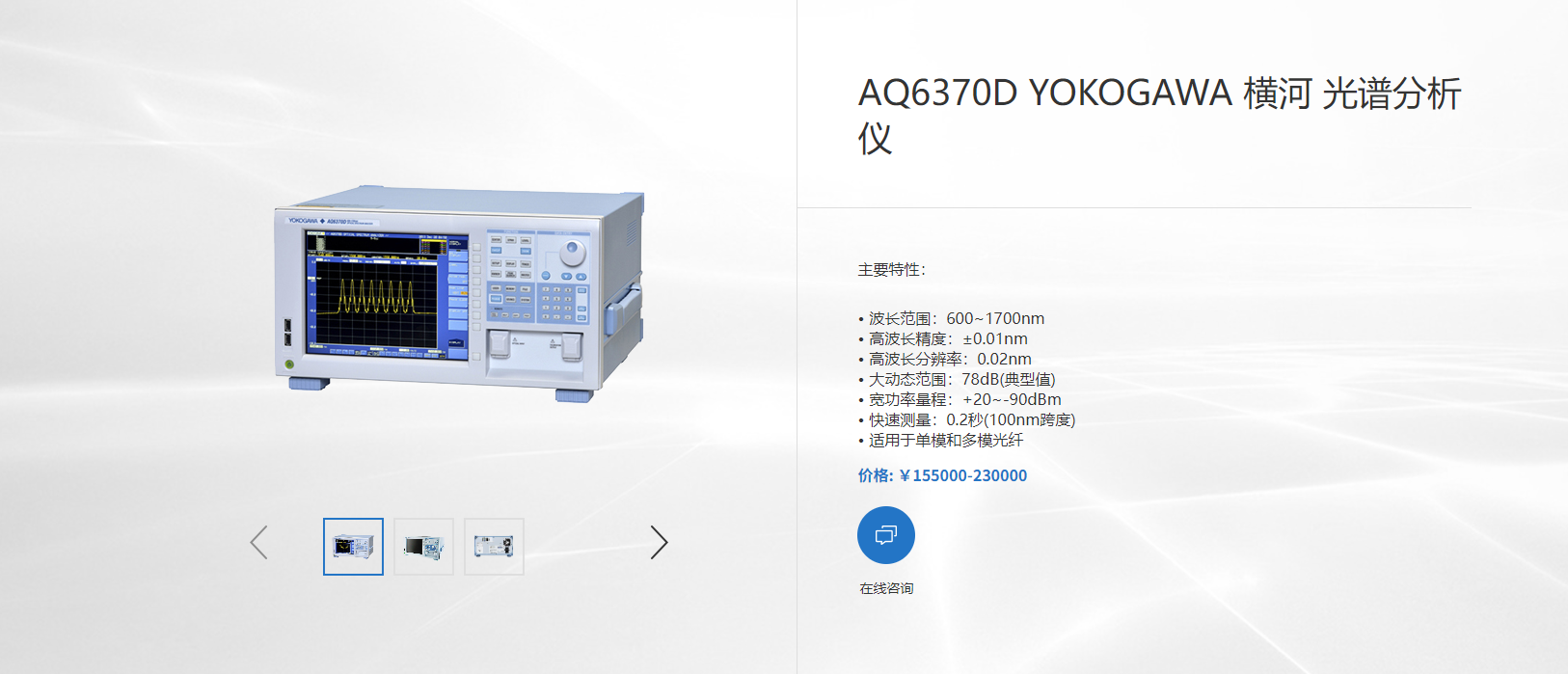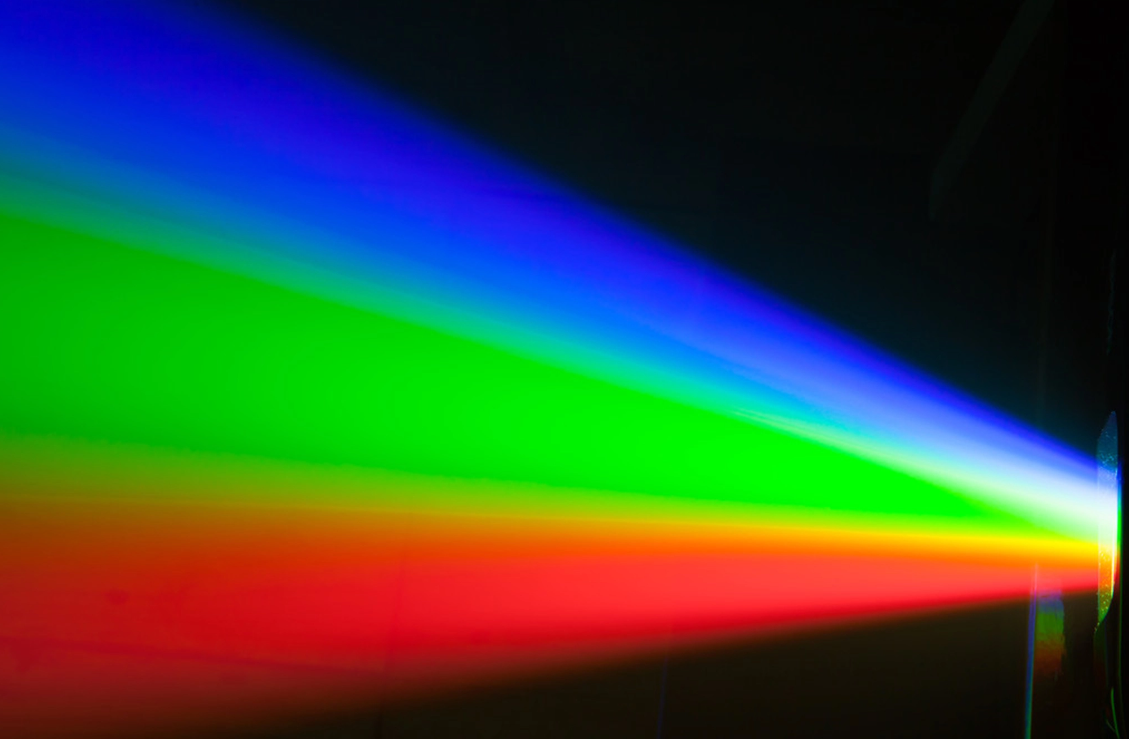How much do you know about the principle of spectrum analyzer, a brief overview?
A spectrum analyzer is an instrument used to measure the radiation spectrum of a luminous body, i.e., the index parameter of the luminous body itself. Spectral analysis is a qualitative analysis that identifies the presence of certain elements from their characteristic spectra, and the intensity of these spectral lines is related to the content of the element in the sample, so the intensity of these spectral lines can be used to quantitatively determine the content of the element.
Classification of spectrum analyzers:According to the working principle of modern spectroscopic instruments, spectroscopic instruments can be divided into two categories: classical spectroscopic instruments and new spectroscopic instruments. Classical spectroscopic instruments are those based on the principle of spatial dispersion; new spectroscopic instruments are those based on the principle of modulation, while classical spectroscopic instruments are slit spectroscopic instruments. According to the principle of dispersive elements, modulation spectrometers can be divided into prism spectrometers, diffraction grating spectrometers and interference spectrometers.

Principle of spectral analyzer: The principle of analysis of spectral analyzer is that the characteristic spectrum of the element to be measured radiated from the light source is absorbed by the ground state atoms of the element to be measured in the vapor of the sample, and the emission spectrum is attenuated by the degree, and then the content of the element to be measured in the sample is obtained, which conforms to the Lampert-Beer law A= -lg I/I o= -LgT = KCL where I is the intensity of transmitted light, I0 is the intensity of emitted light, and T is the transmission ratio, and L is the light distance through the atomizer since L is a constant value so A=KC.
Role of spectrum analyzer:Infrared spectroscopy can be used to study the structure and chemical bonding of molecules and also as a method to characterize and identify chemical species. Infrared spectra are highly characteristic and can therefore be analyzed and identified by comparison with the infrared spectra of standard compounds. The characteristic wave number of chemical bonds can be used to identify the type of compound and can be used for quantitative determination. It can be used to identify different kinds of polymeric materials.

The process of emission spectroscopy
The specimen is evaporated and atomized (converted to gaseous atoms) by the action of energy and the outer electrons of the gaseous atoms are excited to higher energy states. When jumping from a higher energy level to a lower energy level, the atom will release excess energy and emit characteristic spectral lines. This process is called evaporation, atomization and excitation and is achieved with the help of an exciting light source.
The dispersive spectroscopy of the radiation produced by the atoms is recorded on a photographic plate in order of wavelength, resulting in a regular spectral line, or spectrogram. This is achieved with the help of the spectroscopy and detection devices of the spectrometer.
The resulting spectrogram is used for qualitative identification or quantitative analysis. Since the atomic structures of different elements are different, the wavelengths of the spectral lines emitted after excitation are different, i.e., each element has its own characteristic wavelength, so the existence of the element can be accurately identified according to the characteristic spectra of these elements (qualitative analysis), and the intensity of these spectral lines is related to the content of the element in the sample, so the intensity of these spectral lines can also be used to determine the content of the element (quantitative analysis).
A spectrum analyzer is an instrument used to measure the radiation spectrum of a luminous body, i.e., the index parameter of the luminous body itself. Spectral analysis is a qualitative analysis that identifies the presence of certain elements from their characteristic spectra, and the intensity of these spectral lines is related to the content of the element in the sample, so the intensity of these spectral lines can be used to quantitatively determine the content of the element.
Classification of spectrum analyzers:According to the working principle of modern spectroscopic instruments, spectroscopic instruments can be divided into two categories: classical spectroscopic instruments and new spectroscopic instruments. Classical spectroscopic instruments are those based on the principle of spatial dispersion; new spectroscopic instruments are those based on the principle of modulation, while classical spectroscopic instruments are slit spectroscopic instruments. According to the principle of dispersive elements, modulation spectrometers can be divided into prism spectrometers, diffraction grating spectrometers and interference spectrometers.

Principle of spectral analyzer: The principle of analysis of spectral analyzer is that the characteristic spectrum of the element to be measured radiated from the light source is absorbed by the ground state atoms of the element to be measured in the vapor of the sample, and the emission spectrum is attenuated by the degree, and then the content of the element to be measured in the sample is obtained, which conforms to the Lampert-Beer law A= -lg I/I o= -LgT = KCL where I is the intensity of transmitted light, I0 is the intensity of emitted light, and T is the transmission ratio, and L is the light distance through the atomizer since L is a constant value so A=KC.
Role of spectrum analyzer:Infrared spectroscopy can be used to study the structure and chemical bonding of molecules and also as a method to characterize and identify chemical species. Infrared spectra are highly characteristic and can therefore be analyzed and identified by comparison with the infrared spectra of standard compounds. The characteristic wave number of chemical bonds can be used to identify the type of compound and can be used for quantitative determination. It can be used to identify different kinds of polymeric materials.

The process of emission spectroscopy
The specimen is evaporated and atomized (converted to gaseous atoms) by the action of energy and the outer electrons of the gaseous atoms are excited to higher energy states. When jumping from a higher energy level to a lower energy level, the atom will release excess energy and emit characteristic spectral lines. This process is called evaporation, atomization and excitation and is achieved with the help of an exciting light source.
The dispersive spectroscopy of the radiation produced by the atoms is recorded on a photographic plate in order of wavelength, resulting in a regular spectral line, or spectrogram. This is achieved with the help of the spectroscopy and detection devices of the spectrometer.
The resulting spectrogram is used for qualitative identification or quantitative analysis. Since the atomic structures of different elements are different, the wavelengths of the spectral lines emitted after excitation are different, i.e., each element has its own characteristic wavelength, so the existence of the element can be accurately identified according to the characteristic spectra of these elements (qualitative analysis), and the intensity of these spectral lines is related to the content of the element in the sample, so the intensity of these spectral lines can also be used to determine the content of the element (quantitative analysis).







